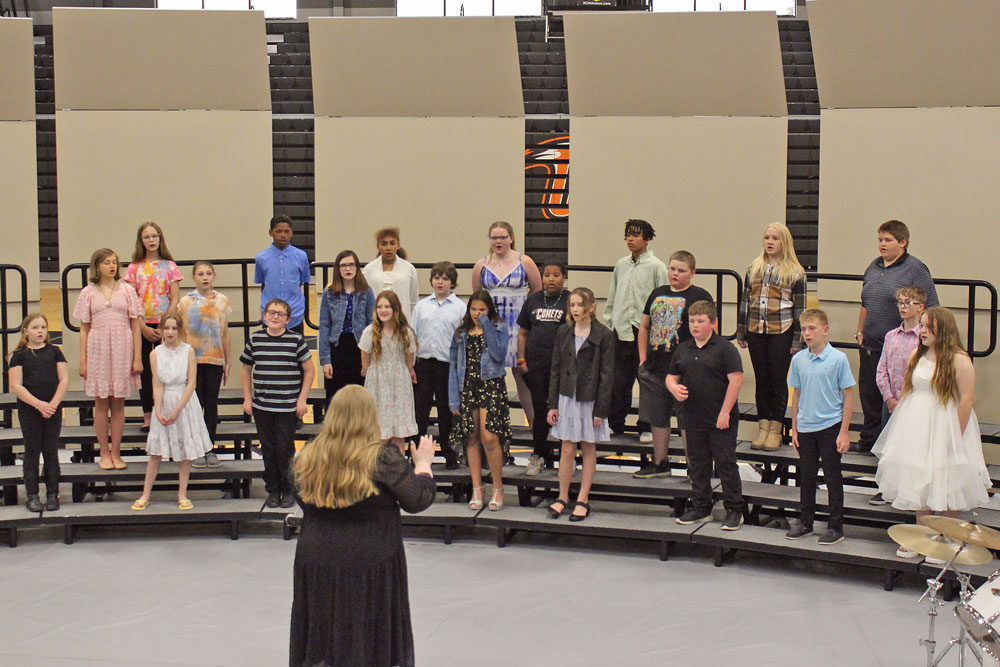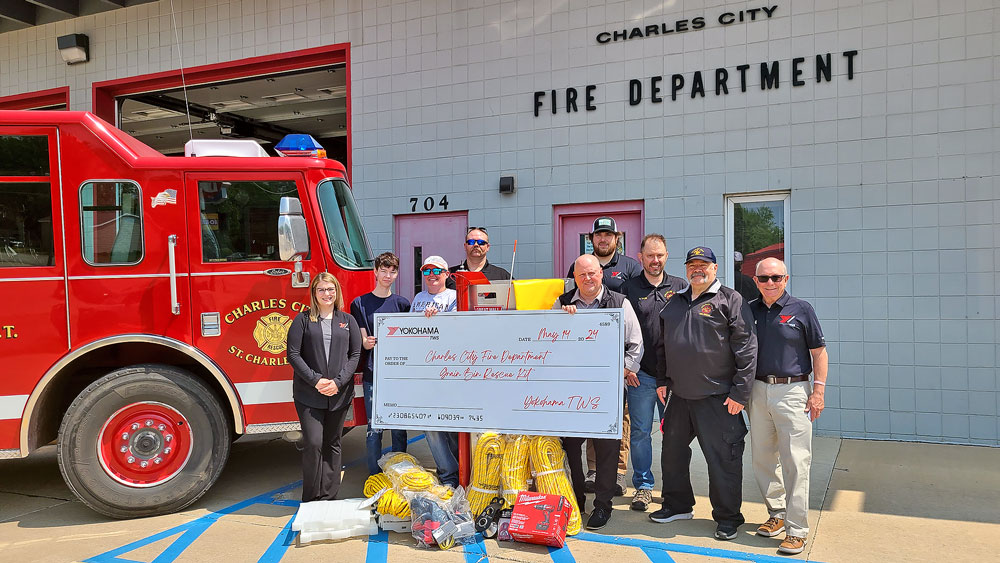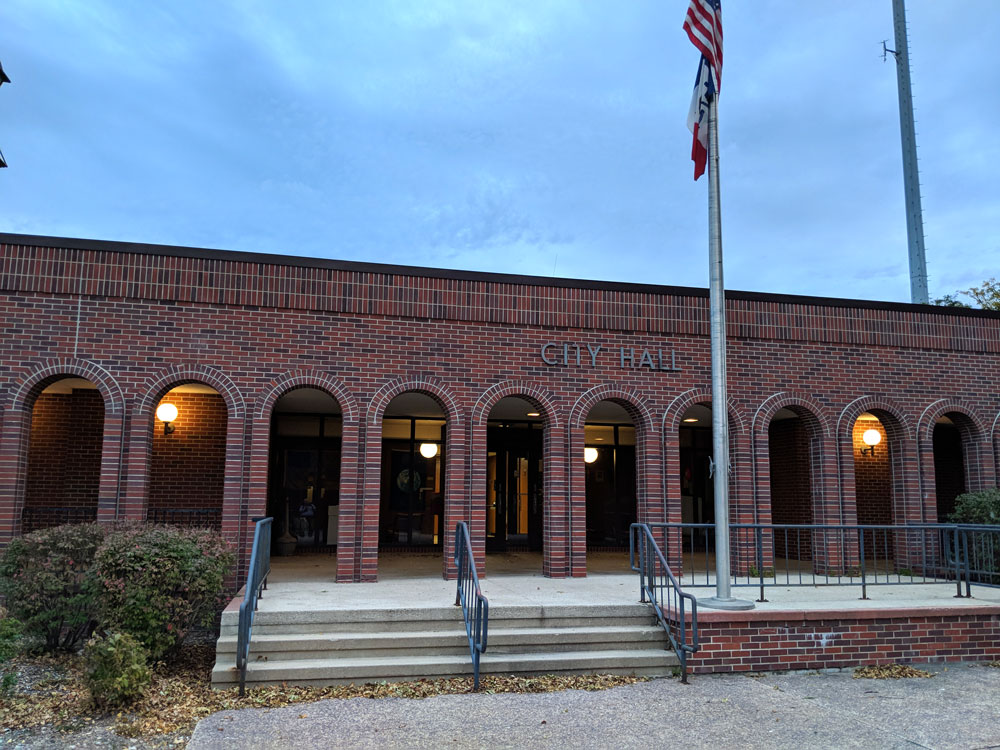Council votes 3-2 to install crosswalk in front of theater

By Kelly Terpstra, kterpstra@charlescitypress.com
Safety first.
The City Council passed a motion by a 3-2 vote to build a crosswalk leading to the Charles Theater on Main Street at a regular meeting on Monday.
Although mid–block crosswalks are not common, the move came after much discussion over the course of the last year about safety concerns of pedestrians leaving the theater and crossing that particular portion of the street. A proposed rectangular rapid flash beacon (RRFB) warning sign was rejected by the Federal High Administration this past January.
The preliminary estimated cost for such a crosswalk would be around $8,000, according to City Engineer John Fallis. The bulk of that price would be coming from making the crosswalk handicapped accessible.
A case was made with emphasis for construction of the crosswalk by Community Development Director Mark Wicks.
“It goes back to what’s the cost of one person being hurt in that intersection,” said Wicks.
Fallis said a centerline pylon would be placed in the middle of the crosswalk, but removed during winter for snow removal. There will also be warning signs constructed for north and south–bound traffic entering the area along Main Street.
Charles Theater Assistant Manager Dale Schmidt said there would be an easel placed on the sidewalk outside the theater to warn pedestrians leaving the building about oncoming traffic. Schmidt also said ads could be played before a movie to remind moviegoers to be aware when leaving a picture show about motorists driving past the theater.
Asked by council member DeLaine Freeseman about any potential financial contribution that the theater could provide with the construction of the crosswalk, Schmidt said, “I have no authority at all to commit the theater to any dollars. I would say this, the theater is non–profit. We’re not tax exempt. We pay taxes.”
Council member Michael Hammond, who voted for the motion to build the crosswalk, was supportive of the theater taking an active role even without monetary participation.
“It sounds like you are making other investments into helping with the cause,” said Hammond.
Main Street has a relatively low traffic volume, according to Fallis. Theater attendance fluctuates with 100 patrons attending on a typical evening, according to data provided by the theater. Roughly 90 vehicles drive past the theater at low speeds at 9 p.m. That comes down to 1 car driving by every 40 seconds.
Wicks pointed out that the public parking lot across the street brings plenty of traffic to not only the theater, but other buildings and businesses as well, not to mention events held at Central Park.
“The theater traffic is considerable and that’s kind of the catalyst for this, but I do want to point out a couple things,” said Wicks. “We have a very big drawing retailer right next to them. We hopefully have a restaurant again next to that.”
Freeseman — who along with council member Jerry Joerger voted against the creation of the crosswalk — wondered how many people would use the crosswalk, especially during night–time hours.
“I sincerely hope that they use the crosswalk. I’m just afraid you’re still going to have just a large migration of people pretty much anywhere across that street,” said Freeseman. “My real concern is most of this is going to happen at night, when it’s dark, and if there’s not some kind of flashing light going there to really draw people’s attention, it’s just going to be one more sign along Main Street to look at.”
City Administrator Steve Diers said a completion date for the crosswalk could be sometime this fall.
“But don’t hold me to that,” he said.
Diers stated in his City Report that the transit system is going well and use is very high almost a month into the new contract.
‘We currently have a waiting list for 13 students that we don’t have room for,” said Diers.
Diers said at some point his department will probably have to look into adding a fourth bus into the rotation and hiring more drivers to alleviate the situation.
“The real test for the transit will begin on Thursday when school starts,” Diers said.
Diers also brought to the attention of the council that there is an issue with an engine on one of the trucks for the Fire Department. The truck is about 15 years old and halfway through its life cycle. There are two options for replacement — a rebuilt motor for $19,000 or a remanufactured engine for $26,000. That decision on which engine to purchase will be brought up at the next council meeting.
The council also went into closed session to discuss acquiring property as part of the Water Resource Recovery Facility (WRRF). A potential purchase price was discussed but no official action was taken.
Other developments at the meeting:
• A request for an extension from Cambrex for the High Quality Jobs Program was approved. The total spent on the project at the deadline of January 31 was about $200,000 short of the $66.7 million that was budgeted.
• A grant for $9,540 for fascia work was approved and awarded to Lanie and Cort Sanvig, owners of St. Charles Brewing Co.









Social Share